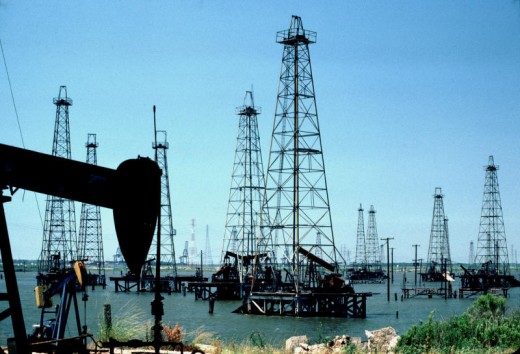Effects of $200 Oil On The Economy
Effects Of $200 Oil On The Economy

Many dire predictions regarding oil prices increasing to $200 per barrel have been made, if Iran's nuclear infrastructure is attacked to prevent the country from developing nuclear weapons. These $200 oil predictions are based on Iran retaliating by closing the important oil shipping lanes in the Straits of Hormuz or attacking oil production and distribution facilities in the Middle East.
There is also the possibility that supply and demand gets so tight that oil slowly churns higher to $200 per barrel or more. The peal oil theory may have lost a lot of its punch in recent years, as oil has traded below $50 per barrel in early 2015; however, there are still plenty of factors present that could tighten supply and send oil up to and over $200, from wars in oil producing countries to an explosion of demand for oil in the developing world, as economic stimulus and growth pick up.
$200 oil ($200 per barrel) sounds alarming when taken at face value, since developed economies are so reliant upon oil as a transportation fuel and chemical feedstock, and many recessions in recent decades are directly tied to oil price spikes. However, taking a step back to look at the bigger picture will alleviate some of the fears associated with the potential effects of $200 oil on the economy.
Increasing Oil Prices | $200 Oil and Its Likely Impact on the Economy
There certainly is reason to be concerned about oil price spikes, due to their potentially negative impact on oil dependent economies. Since the initial oil shock in 1973, when crude oil prices quadrupled from $3 per barrel to $12 per barrel during the Arab Oil Embargo, every major oil price spike has been followed by a recession in the United States and much of the rest of the developed world.
A move to $200 oil, as measured by the world crude oil benchmark known as Brent crude oil, would be a doubling in price from the approximately $100 pre-crisis January 2012 trading price of Brent oil. There is no doubt that there would be a large psychological impact if $200 oil became a reaility and gasoline was approaches $6.00 per gallon, probably enough of an impact to cause a sharp curtailment of consumer spending, triggering a new recession. However, this would still only be a 100% increase in the price of oil, not the 400% increase that occurred in 1973 during the Arab Oil Embargo, or the 300% increase that occurred in 1979 after the Iranian Revolution, or the over 700% increase that occurred over first decade of the 21st Century, when oil went from approximately $20 per barrel to $140 per barrel.
Yes, $200 oil sounds scary, but the world has been through much sharper increases in the price of oil over the past few decades and survived and thrived. No doubt, developed economues would suffer if oil traded as high as $200 per barrel, and likely fall back into a recession. But thanks to energy efficiency gains and technological developments in recent years, we are not nearly as dependent on oil as we were during prior oil price spikes. Drivers now have options that they never had before, including flex-fuel vehicles that run on home grown ethanol or electric vehicles that run on electricity that can be derived from many sources, including renewable energy sources. For home heating, conversion to abundant natural gas or an electrically driven geothermal heat pump heating system are options for those dependent upon oil for their home heating needs.
The recent instability in the oil producing regions of North Africa and the Middle East is yet another wake-up call letting us know that it would be prudent to continue moving away from oil as our primary transportation fuel before $200 oil is a reality. The oil price spikes over the past four decades are just a preview of the sharp increase in the price of oil that is inevitable as the world approaches the point of “Peak Oil” production. At that point, oil demand will outstrip supply, and the price of oil and everything derived from oil will move to a higher trading range, which will likely be much higher than $200 oil.
Additional Reading
- Can Biofuels From Algae or Garbage Solve Our Energy ...
Recent advancements in the science of growing algae for biofuels and refining organic garbage into biofuels hold out hope that our energy problems could someday be solved using biofuels. - Why Is It So Hard To Make Ends Meet These Days?
This article examines why is it so hard to make ends meet financially these days. There are a number of reasons why it is more difficult to get by financially each month than it was in the past. - Living Off The Electrical Grid By Generating Electri...
For those that want to have a backup source of electricity to keep the electricity flowing when the electrical grid experiences power outages or want to live off the electrical grid permanently, there are a number of different options.
$200 Oil in 2015-Oil Price Positive as OPEC Calls Bottom
This content is accurate and true to the best of the author’s knowledge and is not meant to substitute for formal and individualized advice from a qualified professional.
© 2011 John Coviello








